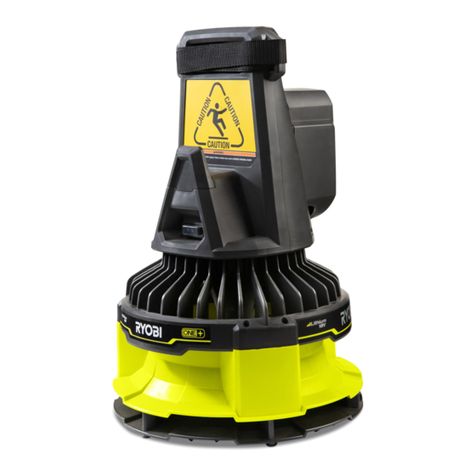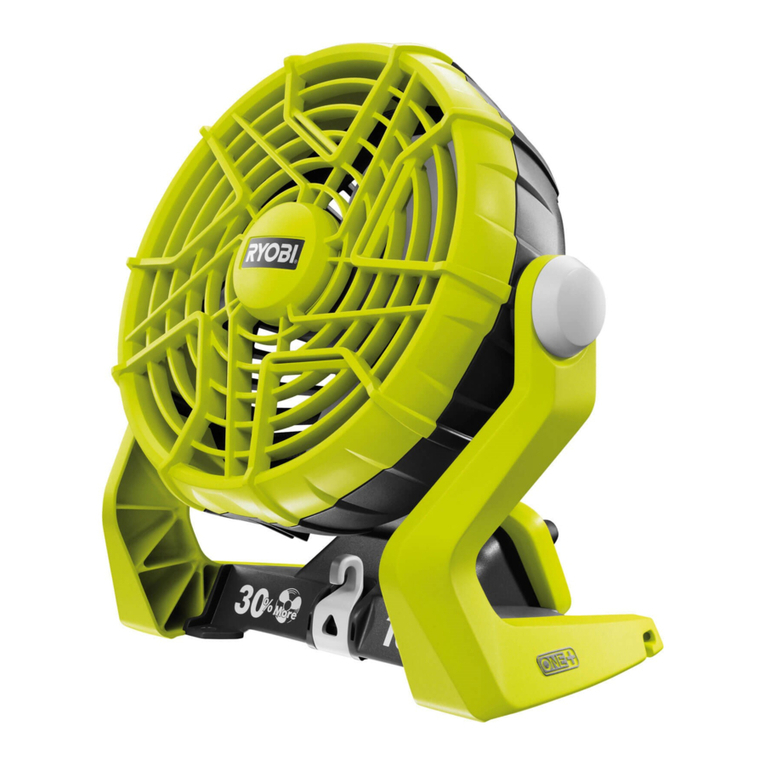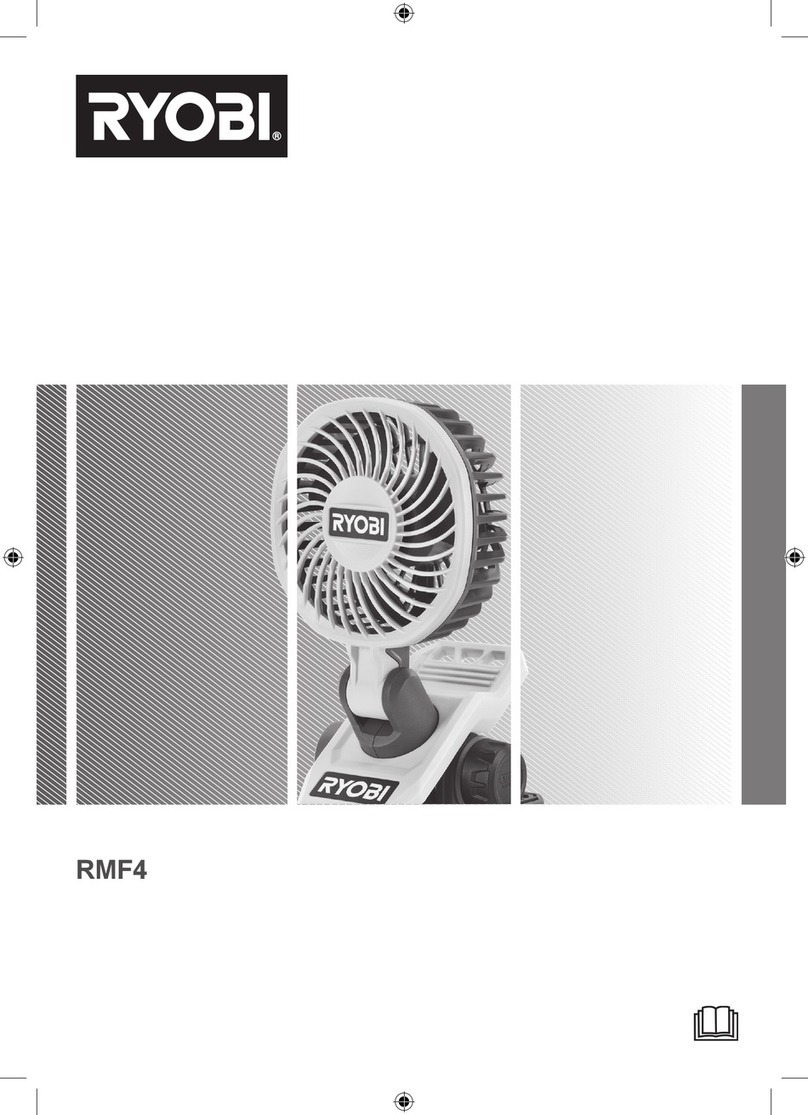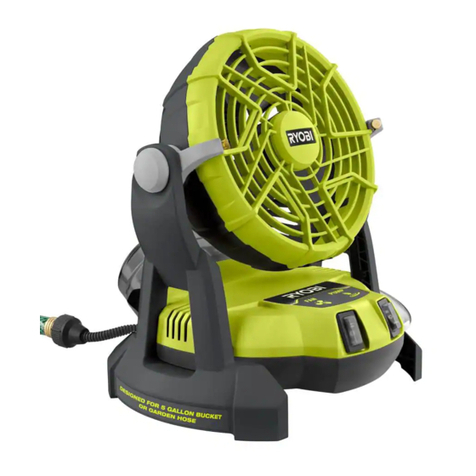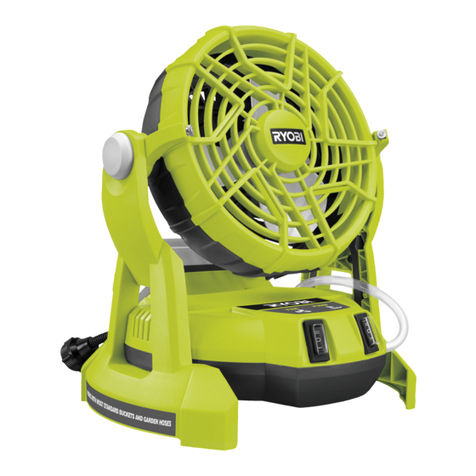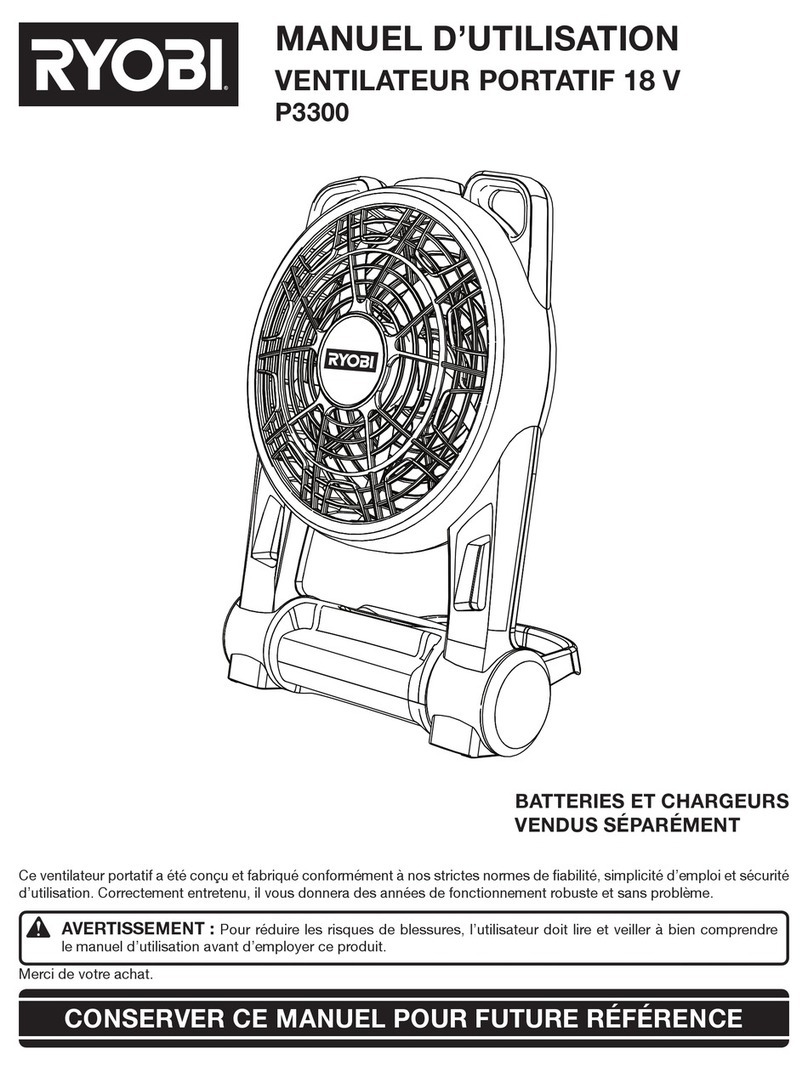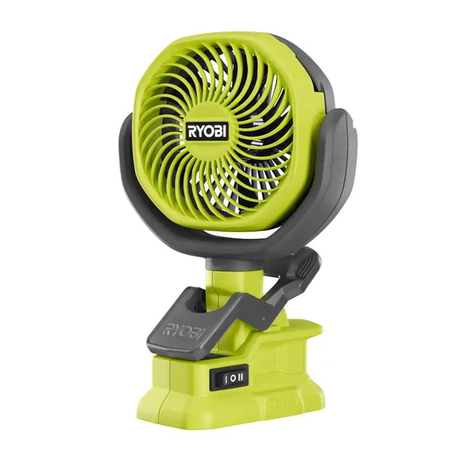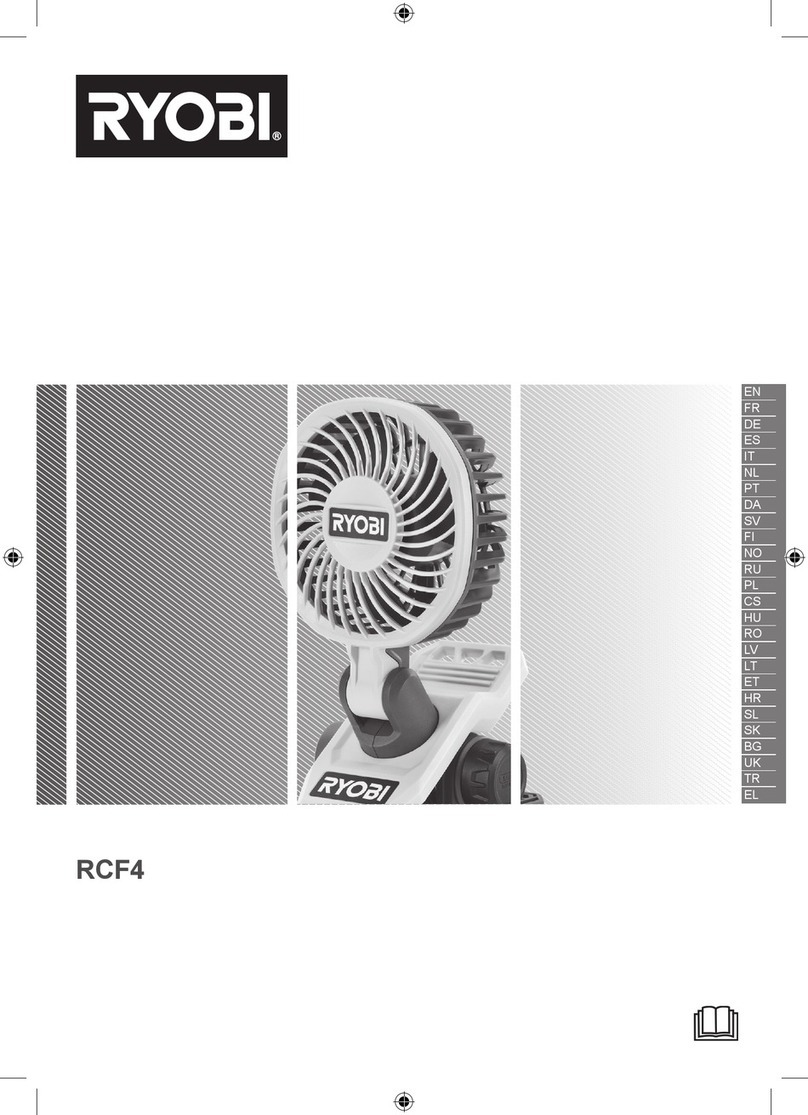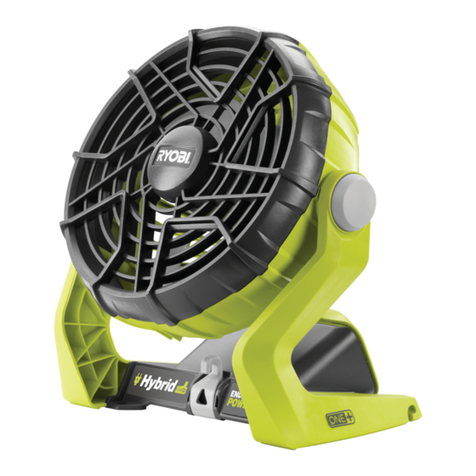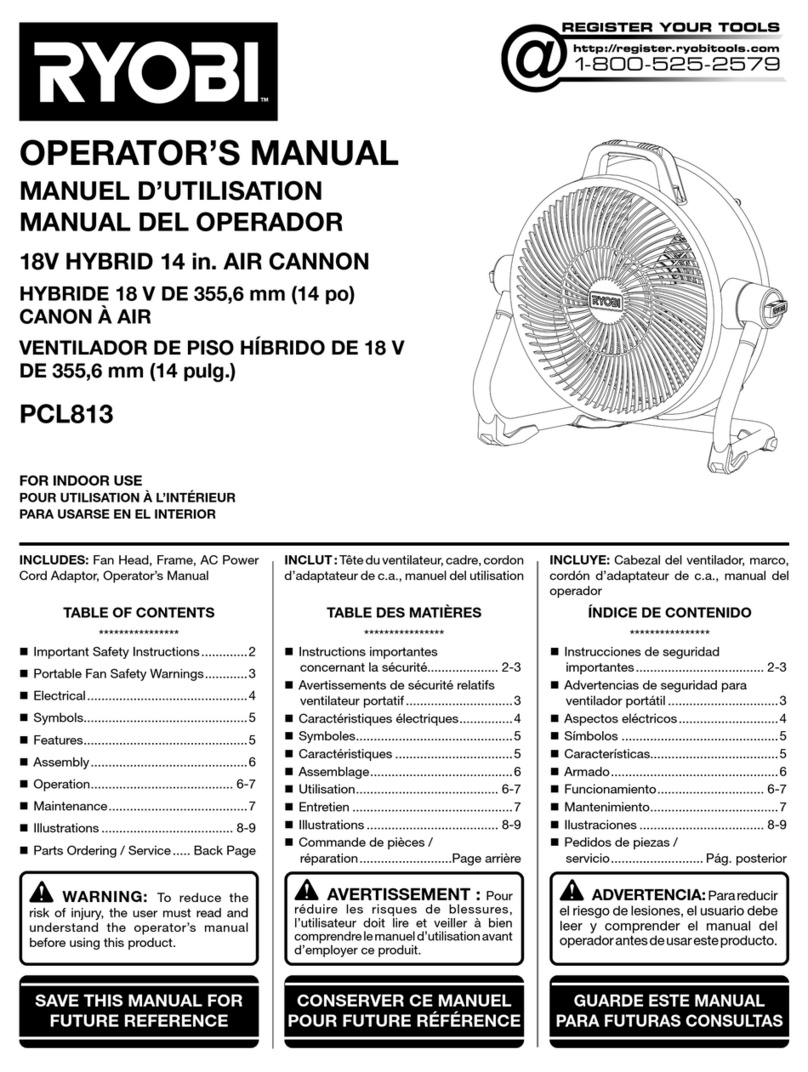
2
tool repaired before use. Many accidents are caused
by poorly maintained power tools.
■Keep cutting tools sharp and clean. Properly
maintained cutting tools with sharp cutting edges are
less likely to bind and are easier to control.
■Use the power tool, accessories and tool bits etc.
in accordance with these instructions, taking into
account the working conditions and the work to
be performed. Use of the power tool for operations
different from those intended could result in a
hazardous situation.
■Keep handles and grasping surfaces dry, clean
and free from oil and grease. Slippery handles and
grasping surfaces do not allow for safe handling and
control of the tool in unexpected situations.
Battery tool use and care
■Recharge only with the charger specified by the
manufacturer. A charger that is suitable for one type
of battery pack may create a risk of fire when used with
another battery pack.
■Use power tools only with specifically designated
battery packs. Use of any other battery packs may
create a risk of injury and fire.
■When battery pack is not in use, keep it away from
other metal objects, like paper clips, coins, keys,
nails, screws or other small metal objects, that can
make a connection from one terminal to another.
Shorting the battery terminals together may cause
burns or a fire.
■Under abusive conditions, liquid may be ejected
from the battery; avoid contact. If contact
accidentally occurs, flush with water. If liquid
contacts eyes, additionally seek medical help.
Liquid ejected from the battery may cause irritation or
burns.
■Do not use a battery pack or tool that is damaged or
modified. Damaged or modified batteries may exhibit
unpredictable behaviour resulting in fire, explosion or
risk of injury.
■Do not expose a battery pack or tool to fire
or excessive temperature. Exposure to fire or
temperature above 130°C may cause explosion.
■Follow all charging instructions and do not charge
the battery pack or tool outside the temperature
range specified in the instructions. Charging
improperly or at temperatures outside the specified
range may damage the battery and increase the risk
of fire.
Service
■Have your power tool serviced by a qualified repair
person using only identical replacement parts.
This will ensure that the safety of the power tool is
maintained.
■Never service damaged battery packs. Service
of battery packs should only be performed by the
manufacturer or authorized service providers.
HYBRID AIR CANNON SAFETY WARNINGS
■Know the product. Read operator’s manual carefully.
Learn its applications and limitations, as well as the
specific potential hazards related to this tool. Following
this rule will reduce the risk of electric shock, fire, or
serious injury.
■Do not disassemble the product.
■Do not attempt to modify this product or create
accessories not recommended for use with this
product. Any such alteration or modification is misuse
and could result in a hazardous condition leading to
possible serious personal injury.
■Do not use this product if it is not completely assembled
or if any parts appear to be missing or damaged. Use of
a product that is not properly and completely assembled
could result in serious personal injury.
■Do not use this product to exhaust hazardous or
explosive materials and vapors. It is intended for
general ventilating use only.
■Do not open or modify the product, otherwise the
warranty will be voided.
■To reduce the risk of injury, close supervision is
necessary when a product is used near children.
■Do not allow children to operate this product. It is
not a toy.
■Cleaning and user maintenance shall not be made
by children without supervision.
■Never leave the product running unattended.
Remove the battery pack after use.
■To reduce the risk of personal injury and electric
shock, the portable fan should not be played with or
placed where small children can reach it.
■It is possible that unsecured hair may be drawn into this
fan and may be come entangled and may cause injury.
Keep loose or flying hair away from this product at all
times.
■Battery tools do not have to be plugged into an electrical
outlet; therefore, they are always in operating condition.
Be aware of possible hazards when not using your
battery tool or when changing accessories. Following
this rule will reduce the risk of electric shock, fire, or
serious personal injury.
■Do not place battery tools or their batteries near fire or
heat. Following this rule will reduce the risk of explosion
and possibly injury.
■Never use a battery that has been dropped or received
a sharp blow. A damaged battery is subject to
explosion. Properly dispose of a dropped or damaged
battery immediately.
■Batteries can explode in the presence of a source
of ignition, such as a pilot light. To reduce the risk of
serious personal injury, never use any cordless product
in the presence of open flame. An exploded battery
can propel debris and chemicals. If exposed, flush with
water immediately.
■Do not charge battery tool in a damp or wet location.
Following this rule will reduce the risk of electric shock.






